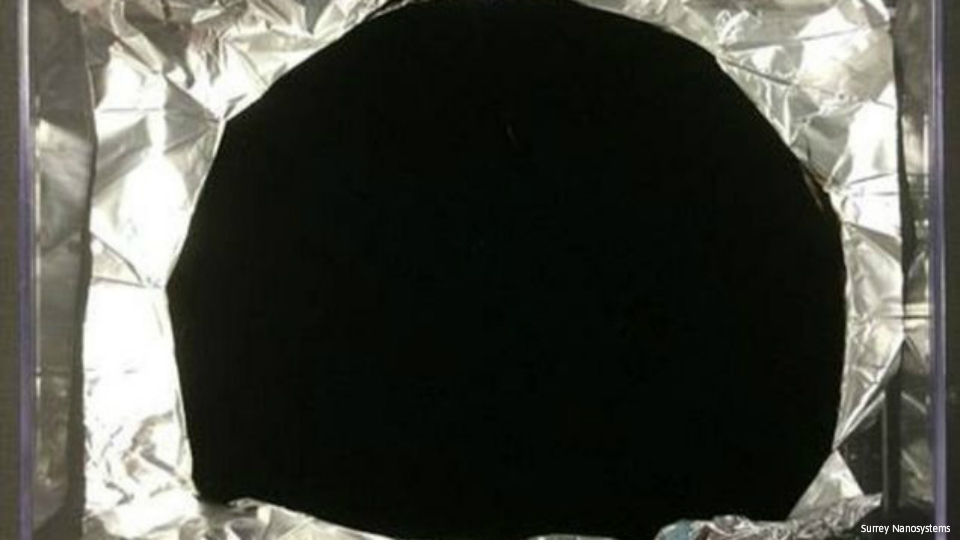Filtered By: Scitech
SciTech
Dark matter, literally: Scientists create 'super-black' material
By MIKAEL ANGELO FRANCISCO, GMA News
Have you ever wondered what a black hole really looks like? Well, this is probably as close as you can get to looking directly into one.
Scientists from Surrey NanoSystems, a British company focusing on nanomaterial research, announced that they had successfully created the world’s darkest material. Described as a specialized black coating comprised of carbon nanotubes at least a thousand times thinner than human hair, Vantablack reportedly absorbs about 99.65 percent of visual light, setting a new world record and earning the distinction of being the “blackest black” in existence.
An ebony enigma
“Vantablack is a major breakthrough by UK industry in the application of nanotechnology to optical instrumentation,” affirmed Ben Jensen, Surrey NanoSystems’ Chief Technology Officer.
Vantablack’s nanotubes are so small and tightly packed that the material not only prevents nearly all light from penetrating it, but also fully absorbs any light that does manage to get through by “bouncing” it from tube to tube.
“(It) reduces stray-light, improving the ability of sensitive telescopes to see the faintest stars, and allows the use of smaller, lighter sources in space-borne black body calibration systems,” said Jensen. “Its ultra-low reflectance improves the sensitivity of terrestrial, space and air-borne instrumentation.”
According to the researchers, Vantablack has the highest thermal conductivity and lowest mass-volume of any material that can be used in high-emissivity applications. The material is seven and a half times more effective than copper as a heat conductor, and has about ten times the tensile strength of steel. In addition, Vantablack possesses “virtually undetectable levels of outgassing and particle fallout.”
The synthetic material’s special characteristics make it particularly useful in astronomical cameras and telescopes – specifically in calibrating them to observe the universe’s oldest objects – as well as infrared scanning systems. It is also well-suited for coating Micro Electro Mechanical Systems (MEMS) –type optical sensors and other internal components, and can be applied to lightweight, temperature-sensitive materials (like aluminum).
Rather unsurprisingly, military applications have also been brought up, the details of which the company remains secretive about (along with the total cost of researching and creating the material).
Dark and strange

Interestingly, one would not even need a special telescope just to witness Vantablack’s unique ability to “suck out” light.
A photograph shows the material spread across the visibly crumpled aluminum foil where it was grown. Under normal circumstances and with any other type of fabric, the folds, bumps, hills, and creases on the surface of the material would be instantly noticeable.
However, Vantablack’s special properties practically eliminate all visual traces of shape, form, and distortions caused by the crumpled foil underneath it, leaving only a large spot of nothingness visible to the human eye.
“You expect to see the hills and all you can see … it's like black, like a hole, like there's nothing there,” says Jensen.
“It just looks so strange.”
Vantablack is set to be formally launched this week at the Farnborough International Airshow. — TJD, GMA News
More Videos
Most Popular




